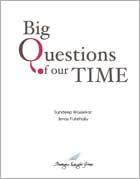Microbial Villains: No Longer Fiction
 |
December, 2011
By Ilmas Futehally
|
A radio play broadcast in 1938 about an invasion by Martians into New Jersey created pandemonium on Halloween evening. Structured as a series of radio news broadcasts, the play managed to create panic across North Eastern United States and Canada with thousands of people fleeing their homes in whatever transport that they could find- cars, trains and on foot. The Martians were reported to be pulsating glowing human-like beings that turned everything around them to cinders using death rays. In 1938, HG Wells the playwright and Orson Wells the actor felt that there was a need to introduce beings from another planet to give credence to the idea that some unknown creature was capable of destruction on a grand scale.
Almost 30 years later in 1969, fiction writer Michael Critchon created a new extraterrestrial microbe that arrived on earth via a space probe. The microbe rapidly clotted blood in some people and created instant insanity in others. In the best selling book Andromeda Strain, Michael Critchon felt the need to introduce these organisms from outer space, implying that such a microbe could not possibly evolve on earth.
Unfortunately this is no longer the case. Today�€™s HG Wells or Michael Critchon would have to make no particular effort to find creatures in the genetics and bio-chemical laboratories of the world to populate both the radio broadcast of 1938 and the bestseller of 1969. In fact, rather than make these creatures known, laboratories are going to extreme lengths to hide them from public view.
In the last few years, inadvertent release of certain microbes into the environment has caused chaos, though on a limited scale so far. These incidents have been kept as secret as possible. Ed Hammond of the Sunshine Project in Texas that monitors the use of biological agents says that lab accidents happen a lot more frequently than the public is aware of. He has testified that there are more than 20,000 people involved in bio-defence research in the United States alone and a 12-fold increase in lab space since 2004. The Centre for Arms Control and Non-proliferation has reported that the budget for bio-defence spending has risen to more than 57 billion dollars since 2001.
While all the accidents that have occurred are not and will never be known, a few that have been reported should act as a red flag. In early August 2007, the spread of Foot and Mouth Disease in the UK was traced to a strain as used at the nearby Pirbright laboratory site. The epidemic spread to a few surrounding areas and more than 100 cattle had to be slaughtered to contain the outbreak. In 2006, the death of a lab worker at Texas A&M due to brucellosis took place after cleaning a high containment container. An investigation into the incident revealed that Texas A&M was not authorized to weaponize brucellosis, an experiment that was underway with unauthorised people being allowed to access the deadly disease. Workers in another high containment laboratory at Texas A&M had tested positive for exposure to Q fever, which can cause death in humans.
In 2004, a military researcher in the US was infected while studying the SARS virus, leading to the quarantine of 34. In another incident, two graduate students were infected by SARS, and transmitted the disease to seven other people outside the lab, leading to one death and the quarantine of more than 200 people. In the same year, the exposure of 3 researchers at Boston University Medical Centre to tularaemia or rabbit fever occurred. The University waited for 3 weeks before informing the relevant authorities. The researchers who got sick thought that were working with a weakened strain that posed no threat to humans.
In 2001, researchers in Australia, trying to genetically engineer the mousepox virus to produce a contraceptive vaccine to control mouse populations accidentally created a virus that was so virulent that it killed all of the mice in the experiment within nine days of their being exposed to the virus. This experiment was of special interest world wide as the same processes and techniques could be used to create violently virulent forms of poxviruses that infect humans.
In 1989, a poisonous substance was found in a genetically modified food supplement that killed 37 Americans and condemned another 5000 to a chronic and painful blood disease. The Japanese manufacturer had used genetically engineered bacteria to produce the supplement, which was sold without a prescription.
All these examples are from the United States, Australia or United Kingdom, which have comparatively stringent laws on genetic research in place. One shudders to think what must be going under the guise of genetic research in other countries. What is definitely clear is that a novelist of today would have little difficulty conjuring up a horror story inhabited by deadly creatures that already exist on earth, rather than looking far into space for inspiration of this kind.
Related Publications
-
.jpg&maxw=50)
Big Questions of Our time: The World Speaks, 2016
Download:Big Questions of Our time: The World Speaks _Full Report
-

-

Second Freedom South Asian Challenge 2005-2025, 2005
read more
Download:Second Freedom South Asian Challenge 2005-2025 Full Report
Related latest News
Related Conferences Reports
-

Global Challenges Conference, October 2016
Download:Global Challenges Conference Report
-

Conference on Responsibility to the Future: Business, Peace and Sustainability, June, 2008
Download:Global Security and Economy: Emerging Issues


